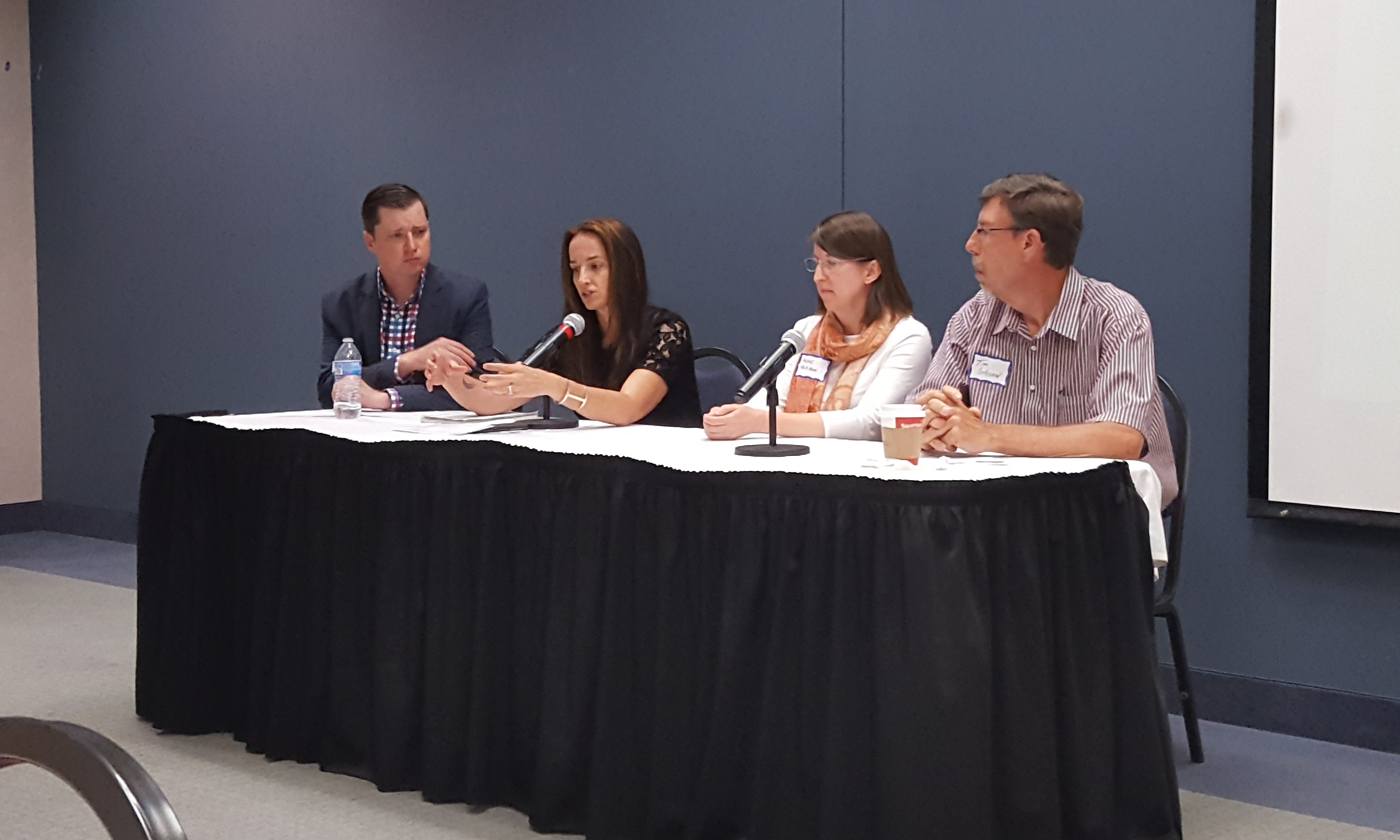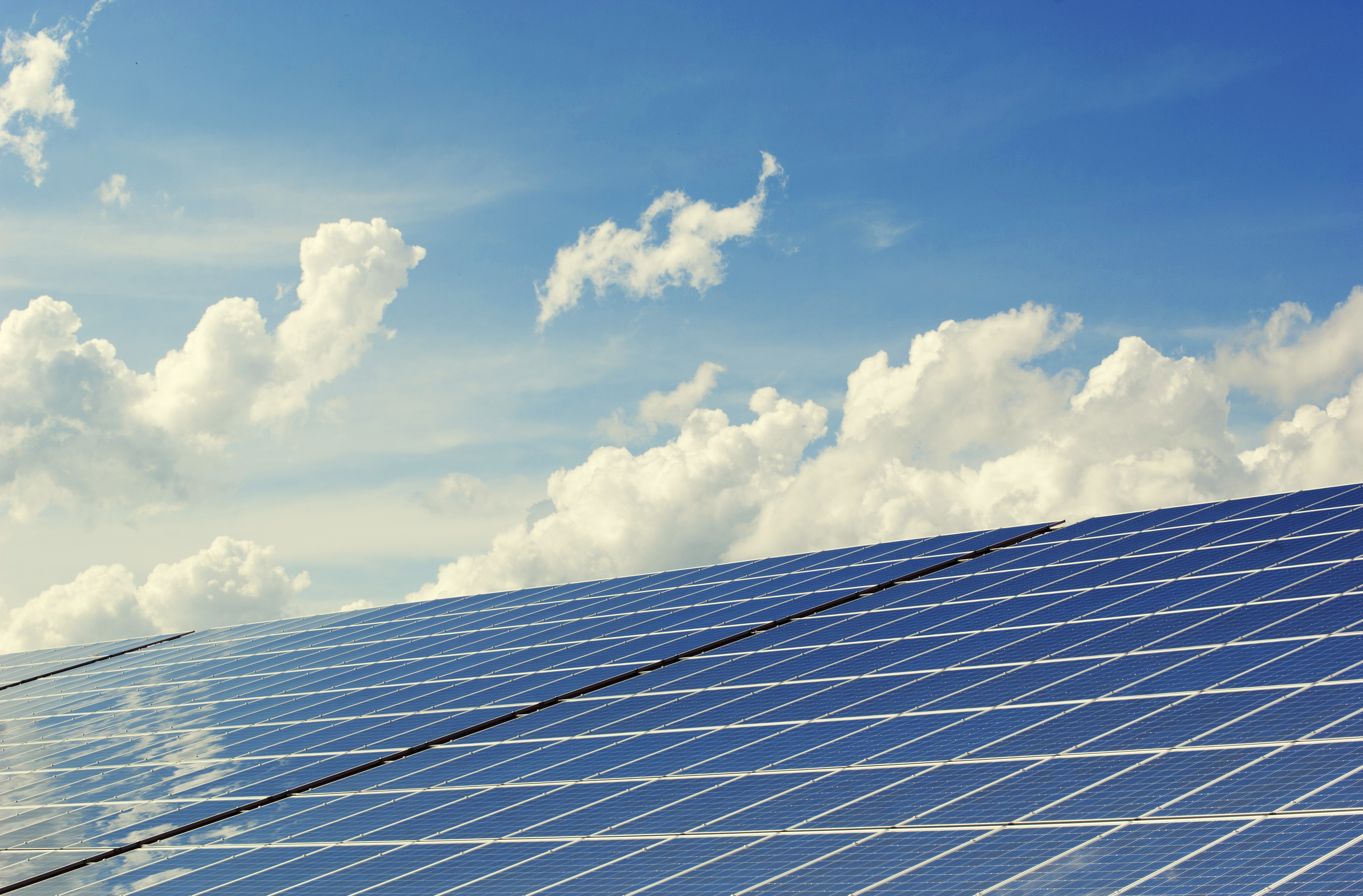
Ten years ago, Illinois developed a renewable portfolio standard (RPS) that set a goal for Illinois investor-owned utilities to obtain 25% of their energy from renewable sources by 2025, but issues with funding have caused major wind and solar projects to come to a standstill in recent years. Today, the Future Energy Jobs Act (FEJA), a bipartisan clean energy and job-building piece of legislation which passed in December 2016, creates programs and incentives that stand to surpass that original goal.
FEJA sets Illinois on the path toward meeting the RPS goal by requiring greater energy efficiency, increasing access to renewable energy through community and low-income solar projects, and creating workforce development programs.
“FEJA has provided a fix for the broken RPS, streamlining the funding, as well as setting goals for new renewable energy projects in the state of Illinois,” explained Shannon Fulton, past-president of the Illinois Solar Energy Association Board and Director of Commercial Sales at StraightUp Solar.
FEJA programs, which will be finalized by early 2018, call for the installation of 1,500 megawatts (MW) of solar in Illinois by 2020, an increase from the state’s current 75MW, which is the equivalent of powering 12,000 vs. 240,000 homes with solar energy.
By 2030, the state is expected to produce approximately 8,300MW of energy from wind and solar, a 100% increase and more energy than Dynegy’s Illinois coal-fired power plants produce. Fulton envisions that by that time “solar will be so mainstream that the incentives won’t be needed. It will just be a standard part of the construction process, every home and every new business—solar will just be a part of it.”

Energy efficiency gains will be made through programs launched by the state’s two largest investor owned utilities, ComEd and Ameren. A Natural Resources Defense Council (NRDC) report found that “the amount of additional energy projected to be saved in 2030, relative to a “business as usual” scenario, is equivalent to the annual output of three large coal plants.”
As Illinois businesses gear up to provide the work needed to produce, deliver, and install energy efficient appliances and building upgrades, thousands of jobs will be created each year and the NRDC report estimates that an average of $700 million annually will be added to the state’s economy between now and 2030. Illinoisans could reap the energy efficiency rewards with cleaner water and air, lower energy bills, tens of thousands of jobs, and a booming economy. This is all great news for Illinois rivers, water, wildlife, and communities.
But, before we celebrate these gains, we must ensure that Ameren holds to the goals they established in FEJA. In its first energy efficiency plan filing with the Illinois Commerce Commission, Ameren is seeking to lower the targets they promised to meet. PRN issued an Action Alert on August 4th encouraging members to submit comments to the ICC before September 12th demanding that Ameren be held to their original goals, so downstate Illinoisans will see the benefits and jobs expected from increases in energy efficiency.
The gains in renewable energy will be made from utility scale projects, large and small distributed or on-site generation, a community renewable generation program, and brownfield solar. The community programs allow community members who may not have an opportunity for an energy project on their property, such as renters or those with shaded roofs, to come together to help fund an offsite renewable energy project and receive financial credit for the energy produced there.
A just transition to renewable energy in Illinois communities is addressed in FEJA through a “solar for all program” that will provide incentives for low income distributed generation, community solar initiatives, incentives for non-profits and public facilities, as well as low income community solar pilot projects.
The “workforce development programs” will be administered by ComEd with money for solar training pipeline, craft apprenticeship, and multi-cultural jobs programs. In particular, companies like StraightUp Solar want to help individuals in communities that will lose coal jobs as Illinois transitions. Fulton said, “We will help employ individuals transitioning away from those industries. We know the coal industry is contracting in a way that it won’t recover from. Our participation in providing a pathway for job transition focuses on those individuals and others in low-income and front-line communities.”
For towns and cities to see the economic and environmental benefits of FEJA, community leaders need to take action. Fulton suggests that communities hold informational meetings on FEJA, and solar in general.
“The foundation for solar literacy is just not there yet,” she explained. “If people understood the basic financial and environmental benefits that come from going solar it would help expedite the types of solar projects that FEJA support.”
Prairie Rivers Network recently partnered with EcoJustice Collaborative in their efforts to spread the word about FEJA by hosting multiple Clean Energy Job Forums across the state, and organizations like the Sierra Club have been offering similar discussions statewide. See below for a list of upcoming informational sessions:
Upcoming Community Forums/Info Sessions
Champaign, IL – Sept 11, 5-7pm, “Clean Energy Town Hall”, Illinois Terminal (45 E Market St., Champaign, IL)
Carbondale, IL – Sept 14, 7pm, Panel: “Transforming Southern Illinois: Harnessing New Solar and Energy Efficiency Opportunities”, Carbondale Civic Center, (200 S Illinois Ave., Carbondale, IL)
Chicago, IL – Sept 19, 6pm, “Clean Energy Town Hall with State Rep. Theresa Mah”, Gads Hill Center, (1919 W. Cullerton St. Chicago, IL 60608)







